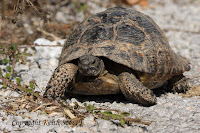Early in August my girlfriend Jane and I spent a weekend in the beautiful seaside town of New Quay in Cardigan Bay, with the intention of watching the Bottlenose Dolphins for which the area is famous.
We visited the Dyfi Osprey project on our journey down and were mightily impressed with the new 360 hide from which we had excellent views of the adult Ospreys. Monty the male helped raise three chicks this year and they were still in the area at the time of our visit. Our last visit in 2012 coincided with some of the worst weather in a century and the road to the reserve was impassable due to flooding. Unfortunately only one of the three chicks that hatched that year survived to fledge and that was only due to human intervention to help with the feeding. But nature bounces back and this year Monty and his current mate Glesni have had a successful breeding season and at the time of writing this blog have both now headed south to Africa for the winter.
Our second detour took us to Bwlch Nant Yr Arian, a lake and small forest not far from Aberystwyth where they have had a Red Kite feeding station since 1999, and boy has this area changed since my last visit some fifteen years ago. The forest has been felled in some areas, there is a fantastic visitor centre and café and there is an excellent hide from which to view the Red Kites which are fed every day. And for the outdoor enthusiast there are walking and mountain-biking trails. Raptors, bikes and great food; what more could I need!We only paid a brief visit to this area but vowed to drop in on the way home to try and photograph the Kites.
The steep streets and seaside cafes of New Quay were bustling with summer visitors enjoying the sunshine when we arrived and checked into our B&B overlooking the harbour. A quick scan of the sea from our room didn't reveal the expected fins of Bottlenose Dolphins. But after checking in we were soon seated on the seawall scanning the blue waters for signs of Cardigan Bay's most famous residents. As usual, we were soon rewarded with views of an adult with a calf; time to crack open a beer and celebrate. After a delicious evening meal and good night's sleep we rose early to enjoy a hearty breakfast and then again walked the short distance to the harbour to settle down for some seaside wildlife watching. There were more dolphins present, but not as close as we've seen them in the past, but I did mange some record photos with my 400mm lens. Apart from the usual gulls and a few shags, seabirds were a bit thin on the ground (sea?). There were only a few very distant Gannets and this indicates that the fish shoals must have been some way from the harbour that day and along with them most of the area's dolphins. We did see the mother and calf again and the occasional distant dolphin leaping and splashing in the pursuit of fish. But I'm not complaining, it's always a treat seeing any cetacean from land.
Suddenly an unexpected fin appeared in the water, it was more triangular than the falcate fin of a Bottlenose, and was that the swish of the tip of a tail in the fin's wake? Yes it was a Basking Shark! Not what I was expecting to see on that sunny Sunday. It too was quite distant, but I did manage to put some other dolphin watchers on to it to enjoy views of this rare visitor.
The day was passing quickly so we decided on a return visit to Nant Yr Arian to witness the Kites being fed. On our arrival, there were over a hundred Kites circling on the thermals and perched in the conifers that dotted the hillsides of this natural amphitheatre. We made our way down to the lake where I photographed a smart Black Darter sitting in the reeds. Despite the food being put out on cue the Kites were somewhat reluctant to come down and feed, now doubt in some part due to the large and noisy crowd of holidaymakers that had gathered to view the spectacle. We returned to the visitor centre where a number of bird feeders were attracting House Sparrows, Greenfinches, various tits and gorgeous Siskins. After taking a few shots, we walked up the hillside where we were treated to stunning views of the Kites which were now descending to feed in peace as their audience had dispersed. A great way to end an excellent weekend of wildlife watching.
 |
| Herring Gull profile |
 |
| Black Darter |
 |
| Red Kite playing at being an Osprey |
 |
| Male Siskin |
 |
| Juvenile Siskin |
 |
| Greenfinch |























